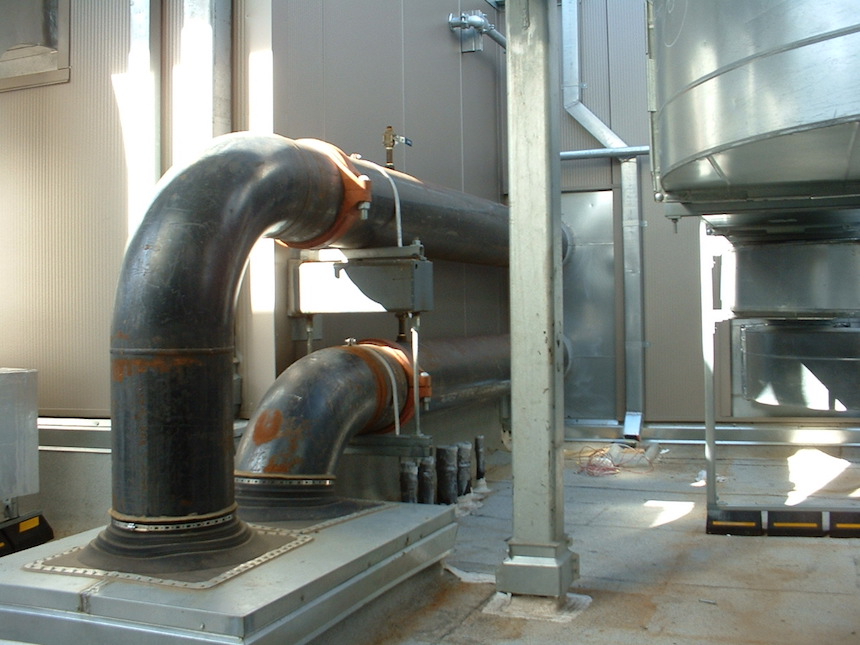 For more than 15 years, drinking water professionals have acknowledged the need for an improved understanding of building-plumbing decontamination. Residential drinking water plumbing systems can become chemically contaminated because of an internal building backflow incident or the distribution of contaminated water through the service line. Contaminated water can reside in the plumbing pipes, tanks, valves, and other appurtenances that extend from the service line to faucets in the building. Field studies in response to a 2014 chemical spill in the Elk River in West Virginia showed that flushing hot water plumbing sometimes had no effect on or actually increased chemical concentrations in water heaters. To develop flushing procedures that completely remove contaminated water, a more thorough understanding of fixture flow-rate behavior and water heater flushing characteristics is needed.
For more than 15 years, drinking water professionals have acknowledged the need for an improved understanding of building-plumbing decontamination. Residential drinking water plumbing systems can become chemically contaminated because of an internal building backflow incident or the distribution of contaminated water through the service line. Contaminated water can reside in the plumbing pipes, tanks, valves, and other appurtenances that extend from the service line to faucets in the building. Field studies in response to a 2014 chemical spill in the Elk River in West Virginia showed that flushing hot water plumbing sometimes had no effect on or actually increased chemical concentrations in water heaters. To develop flushing procedures that completely remove contaminated water, a more thorough understanding of fixture flow-rate behavior and water heater flushing characteristics is needed.
The goal of this study was to better understand fixture flow rates under different fixture use conditions and the actions needed to remove contaminated water from water heaters. Specific study objectives were to (1) determine the degree that faucet aerators, initial service pressure, and number of fixtures running simultaneously influenced fixture and whole-house water flow rates; (2) compare the flow rate differences between hot and cold water systems; (3) evaluate the actual and predicted conservative contaminant removal (through equation-based modeling) from 19-, 50-, and 80-gal water heaters; and (4) provide guidance on how to design residential plumbing flushing protocols.
Field-scale experiments were conducted to first understand fixture flow rates and then use that information to evaluate water heater flushing at the pilot scale. During experiments in two single-family homes, several factors were found to influence fixture flow rate behavior and water dynamics: service line pressure, presence of aerators, the number of fixtures running, and whether the cold or hot water system was operated. When multiple fixtures were opened simultaneously, flow rates across the homes were greatly reduced, and no flow was detected at one home for some open fixtures.
Pilot-scale testing involved removing super-chlorinated water from water heaters (i.e., with no recirculation). Results showed that the flushing time needed for chlorine levels exiting the water heater was influenced by flow rate, water heater volume, and water heater configuration (top-in/top-out compared with top-in/drain valve out). Pilot-scale results were then used to evaluate three mass balance models and determine which model best predicted water heater flushing effectiveness. The three models—a continuously stirred tank reactor (CSTR), a CSTR-plug-flow reactor hybrid, and a variable volume CSTR developed by the authors—all overestimated the time needed to flush the water heaters. The variable-volume CSTR produced the most accurate flushing profile and provided insight into heater hydraulic performance. However, the authors concluded that the CSTR model, the most conservative model, was best suited for flushing protocol design when the top-in/top-out configuration was used. Heater flushing using the top-in/drain-valve-out configuration resulted in short-circuiting and a need for a longer flushing duration. Heaters in the present study were new and had intact dip tubes and heating elements; no sediment or scale was observed on the inner tank wall.
Because of the hydraulic and contaminant removal observations of the present study, it is recommended that flushing protocol designers consider flushing each fixture individually, flushing hot and cold water systems separately, modeling residential water heater flushing with a CSTR model, and assuming low-flow conditions in protocol design. Although empirical models can be used to estimate flushing effectiveness, safety factors should be integrated into the flushing protocol to help address uncertainty. Work is needed to reduce uncertainty associated with the factors that influence contaminated water removal resulting from water heater design and operational differences, as well as plumbing design and operating conditions in existing buildings.
Corresponding author: Andrew J. Whelton is an assistant professor at Purdue University, 3145 Hampton Hall, West Lafayette, IN 47907 USA; awhelton@purdue.edu.
Full Text: pdf

